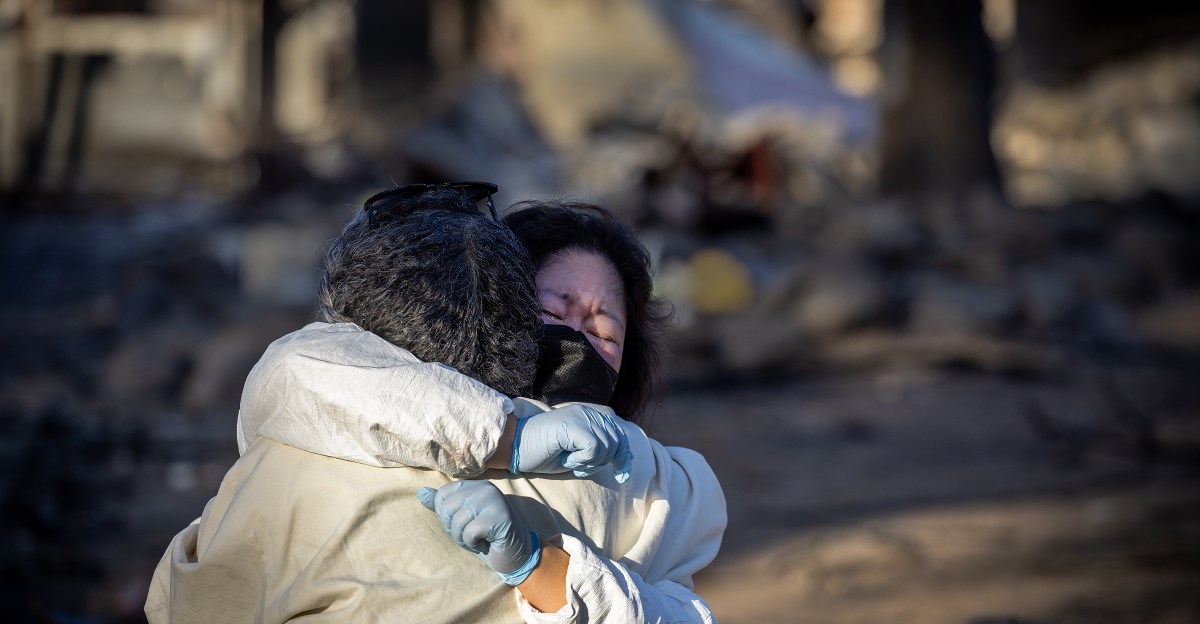Uncovering the Hidden Costs of LA’s Devastating Fires: Who Will Pay the Price?
The recent wildfires in Los Angeles have unleashed a wave of destruction, leaving behind charred landscapes and devastated communities. As the flames flicker out, the aftermath reveals a complex web of hidden costs that extends far beyond the immediate damage. From the destruction of homes and businesses to the long-term environmental impacts and economic repercussions, the question looms: who will ultimately pay the price for recovery and rebuilding?
The Immediate Financial Toll
Initially, the financial impact of LA’s wildfires is staggering. Insurance claims pour in as homeowners and business owners seek to recover their losses. According to estimates, the cost of rebuilding can vary significantly based on the extent of the damage. In many cases, homes are completely destroyed, leading to claims that can reach hundreds of thousands of dollars. But this is just the tip of the iceberg.
- Homeowners Insurance: Many homeowners find that their insurance policies do not cover all the costs associated with rebuilding. Factors such as high construction costs and increased demand for materials can lead to underinsurance.
- Business Interruption: Local businesses suffer not only from physical damage but also from loss of income during the recovery period. A small business owner may face months of lost revenue, which can be devastating.
- Government Resources: Local and state governments must allocate funds for firefighting efforts, emergency services, and recovery programs. This expenditure can strain budgets, diverting funds from other essential services.
The Long-Term Economic Implications
The wildfires’ economic repercussions do not end with the extinguishing of flames. The long-term impacts can ripple through the economy, affecting various sectors:
Real Estate Market Fluctuations
The property market in areas affected by wildfires often sees immediate declines in property values. Potential buyers become wary of investing in high-risk zones, leading to a decrease in demand. Over time, this can lead to a sluggish real estate market, affecting the entire local economy.
Insurance Rate Increases
As claims mount, insurance companies may respond by raising premiums for homeowners in fire-prone areas. This increase in costs can make it financially burdensome for residents to maintain coverage, potentially leaving them vulnerable in the event of future disasters.
Job Losses and Economic Decline
With businesses damaged or destroyed, job losses are inevitable. The hospitality and tourism sectors, which are vital to LA’s economy, often suffer heavily during wildfire seasons. Reduced visitor numbers can lead to further economic decline, creating a vicious cycle.
Environmental Costs: An Often Overlooked Factor
While the immediate financial costs of wildfires are apparent, the environmental damage can be equally devastating and often goes unaccounted for in recovery budgets. The destruction of ecosystems, air quality issues, and loss of biodiversity are significant concerns:
- Air Quality Deterioration: Wildfires release harmful pollutants into the atmosphere, leading to health issues for residents. The long-term health costs associated with respiratory problems and other illnesses can burden public health systems.
- Soil Erosion: The loss of vegetation increases the risk of soil erosion, which can lead to further environmental degradation and impact local waterways.
- Wildlife Displacement: Fires displace countless animals, disrupting local ecosystems and leading to potential species loss.
Who Will Ultimately Pay the Price?
The question of who will bear the financial burden of recovery is complex and multifaceted. Here are several stakeholders involved:
Homeowners and Business Owners
Many individuals are left to shoulder the burden of rebuilding. While insurance may cover some costs, the gaps in coverage can lead to significant out-of-pocket expenses. Additionally, business owners often face a long road to recovery, with lost income and increased insurance costs weighing heavily on their shoulders.
Local and State Governments
Governments are tasked with providing emergency services and recovery efforts. The costs borne by taxpayers can be substantial, as funds are diverted to address immediate needs and long-term recovery programs. The question arises: will taxpayers fund these recovery efforts indefinitely?
Insurance Companies
Insurance companies face pressure to cover claims while balancing their financial stability. As they increase premiums in response to rising claims, they may inadvertently push homeowners and businesses into a precarious financial situation.
Environmental Organizations and Public Health
Nonprofit organizations and government agencies focused on environmental restoration and public health will also play a crucial role in addressing the aftermath of wildfires. Their efforts require funding, which may come from grants, donations, or government allocations. However, these organizations often face resource limitations, complicating recovery efforts.
Looking Forward: A Collaborative Approach to Recovery
In the wake of LA’s devastating fires, it’s clear that a collaborative approach to recovery is essential. All stakeholders must come together to devise strategies that can mitigate the financial impact on individuals and communities. Some potential paths forward include:
- Improved Building Codes: Implementing stricter building codes that prioritize fire-resistant materials can help reduce future losses.
- Community Preparedness Programs: Investing in education and resources for residents to prepare for wildfires can mitigate risks and enhance resilience.
- Environmental Restoration Initiatives: Focusing on restoring ecosystems and improving land management practices can help prevent future disasters and maintain biodiversity.
- Insurance Reform: Advocating for insurance reforms that address the unique challenges of wildfire-prone areas can ensure homeowners maintain adequate coverage.
Conclusion
The hidden costs of LA’s devastating fires extend far beyond the immediate destruction, impacting the economy, environment, and the lives of countless individuals. As the community begins to heal, it is imperative that we address these complexities with a unified strategy. By recognizing the shared responsibility of recovery and rebuilding, we can work towards a more resilient future for Los Angeles and its residents.
See more Your Daily Weather



